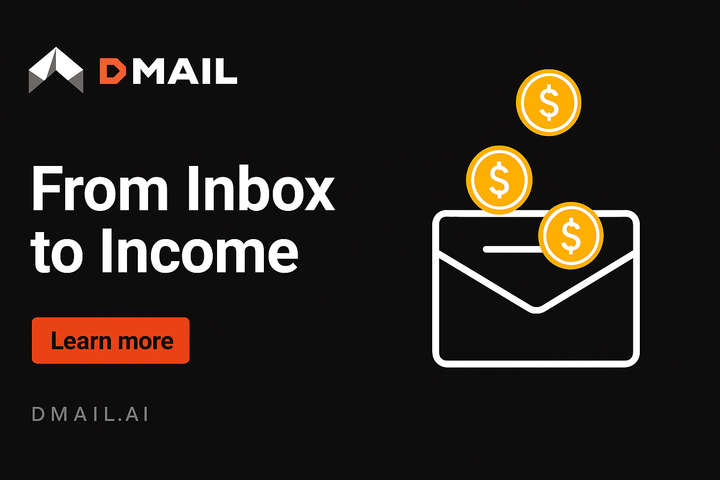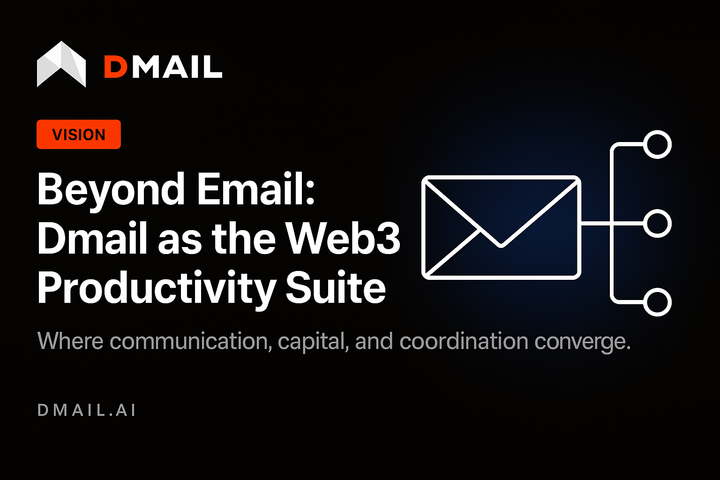Phishing, Data Leaks, and Spam: Why Web2 Email Security Will Always Fail
Web2 email security is failure by design. DMAIL is security by architecture.

Email was supposed to be secure by now. Gmail has AI-driven spam filters. ProtonMail encrypts your inbox. Microsoft Outlook has layers of corporate-grade defenses. Yet every year, billions are stolen through phishing attacks, inbox takeovers, and data leaks. If these giants, with all their resources, still leave users exposed, maybe the problem isn’t the hackers. Maybe the problem is the model itself.
The Numbers Don’t Lie
Phishing is still the most common cyberattack worldwide. Google regularly warns its 1.8 billion Gmail users about new waves of threats. Even ProtonMail, with its encryption-first approach, can’t prevent metadata leaks or protect against malicious links and spoofed senders.
The truth is simple: Web2 email is reactive, not preventative. Filters try to catch threats after they’re sent. Blacklists are updated after attacks occur. It’s like building the locks after the break-in.
Why Centralization Makes It Worse
Every Web2 email provider is sitting on honeypots of user data. Gmail’s global infrastructure, ProtonMail’s Swiss servers, Outlook’s corporate silos — all central repositories attractive to attackers and vulnerable to government pressure.
- Phishing thrives because sender identity is easy to fake. Email protocols like SMTP weren’t designed with cryptographic verification in mind.
- Spam floods continue because the system assumes trust. The default is to deliver, then filter.
- Data leaks are inevitable. Centralized databases will always be high-value targets.
This isn’t bad luck. It’s the inevitable result of a broken design.
How DMAIL Reinvents Security
DMAIL isn’t just building a shinier filter. It’s building a new foundation for trustless, secure communication.
- On-Chain Identity Verification
Every message is tied to a wallet address. If the sender doesn’t hold the keys, they can’t send the mail. Spoofing becomes impossible. - Decentralized Storage
No single database to hack. Messages are distributed, encrypted, and immutable. Hackers can’t breach what doesn’t exist in one place. - Metadata Protection
Not just message content, but subject lines and headers are encrypted. Attackers can’t profile you through your traffic patterns. - User-Owned Security
Instead of relying on corporate filters, you hold the keys to your inbox. No black-box AI decides what you see; the protocol itself protects you.
Why Web2 Can’t Compete
Gmail will never remove ads — they’re the revenue stream. ProtonMail will never escape Swiss jurisdiction. Outlook will never stop serving enterprise lock-in. Their incentives aren’t to eliminate spam, leaks, or phishing. Their incentives are to keep you dependent while patching symptoms.
DMAIL isn’t patching. It’s eliminating the root cause: centralization and blind trust.
The Safer Future
The arms race of spam filters vs. attackers has no finish line. But the Web3 model does something different: it changes the battlefield. With verifiable identities, decentralized storage, and cryptographic enforcement, security becomes the default, not the afterthought.
Web2 email security is failure by design. DMAIL is security by architecture.
The migration isn’t just about privacy or ads anymore — it’s about survival in a digital world where threats are constant. The inbox of the future isn’t guarded by a filter. It’s owned, protected, and powered by the user. That inbox is DMAIL.

Connect with Dmail: Website | Twitter | Discord | Github | Telegram





Comments ()